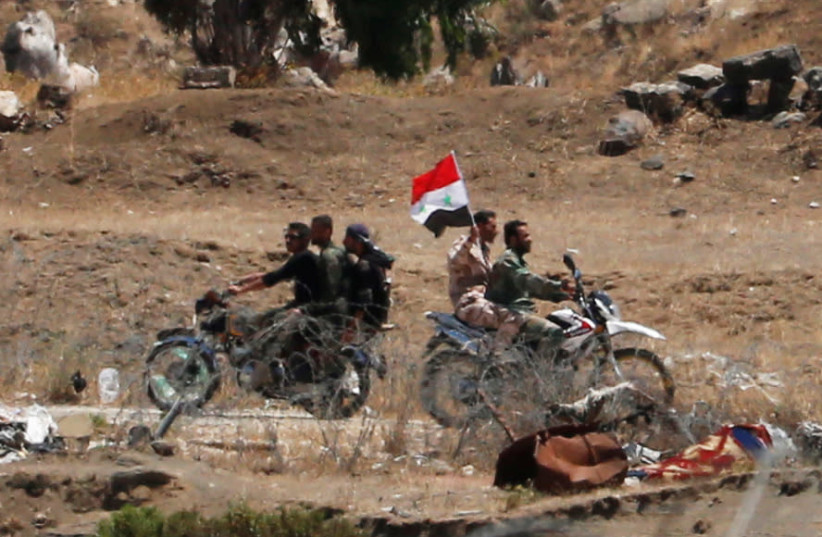A review of incidents in southern Syria in recent weeks points to the area becoming an increasing flash point as many issues are now in flux.
SETH J. FRANTZMAN

A review of incidents in southern Syria in recent weeks points to the area becoming an increasing flash point as many issues are now in flux. It is important to highlight several of the trends that appear to be happening from Daraa near the Golan border to Deir Ezzor and Albukamal on the Euphrates river.
What we know is that at the end of this triangle, near Albukamal, is the Imam Ali base where Iran has constructed an important network of warehouses over an area several dozen square kilometers in size. This area has tunnels and warehouses. In June 2018 an airstrike hit an Iraqi Kataib Hezbollah headquarters near here.
Later airstrikes hit the Imam Ali base. In the fall of 2019 Iraq and Syria opened the border at Al-Qaim but the base was the center of clandestine arms trafficking to Hezbollah. The arms come through here and there are networks of Iranian-backed groups along the river through Al-Mayadin town and then up to Deir Ezzor and then along various roads through Al-Sukna and Palmyra and then to T-4 airbase where Iran has drones and other facilities. Call this the “corridor” for Iran’s road to the sea via Iraq and Syria.
Lets move along the triangle from Albukamal on the Iraqi border heading west through the desert now towards the Golan. Eventually one comes to a US anti-ISIS Coalition base called al-Tanf or Tanaf.
Recently reports indicated the soldiers their experimented with anti-drone gunsights. Not much happens at this base but there are some Syrian rebel forces and Syrian refugees nearby in the Rukban camp. This US footprint is a kind of thumb in the side of Damascus and the Russians, Iran and Syrian regime want the US to leave.
Further West is Daraa, the city that was a symbol of the early protests against the Syrian regime in 2011. Divided during the Syrian civil war it fell to the regime in the summer of 2018 along with neighboring areas. But there are tensions. The Russians were supposed to be in their area to help secure the era after the reconciliation.
Syrian rebels joined the 5th Corps, a unit that was supposed to help in the reconciliation with the regime. Reports indicated that the Russians played a role in this process. On June 20 a bus of the 5th corps was blown up. At funerals for the fighters there were protests. Then on June 27 and 28 more clashes appeared to follow between the Syrian regime and locals.
What is important is to look at this as a southern triangle of uncertainty that is emerging in Syria and one that potentially s of concern to Iran, Russia, the Syrian regime, and the US and Israel. Israel has said it has carried out airstrikes over the last years in Syria and Jerusalem has demanded Iran leave Syria.
The 700-900 Iranian IRGC members in Syria have reportedly been shifting around in recent months, with some asserting that they might be withdrawing a bit. But there are also claims that they are putting down roots with locals, as they have done over the years. For instance last year a Hezbollah “killer drone” team was active near the Golan. In addition a Hezbollah member was killed in an airstrike near the Golan earlier this year.
Content retrieved from: https://www.jpost.com/middle-east/southern-syria-is-a-center-of-new-instability-and-military-activity-633103.